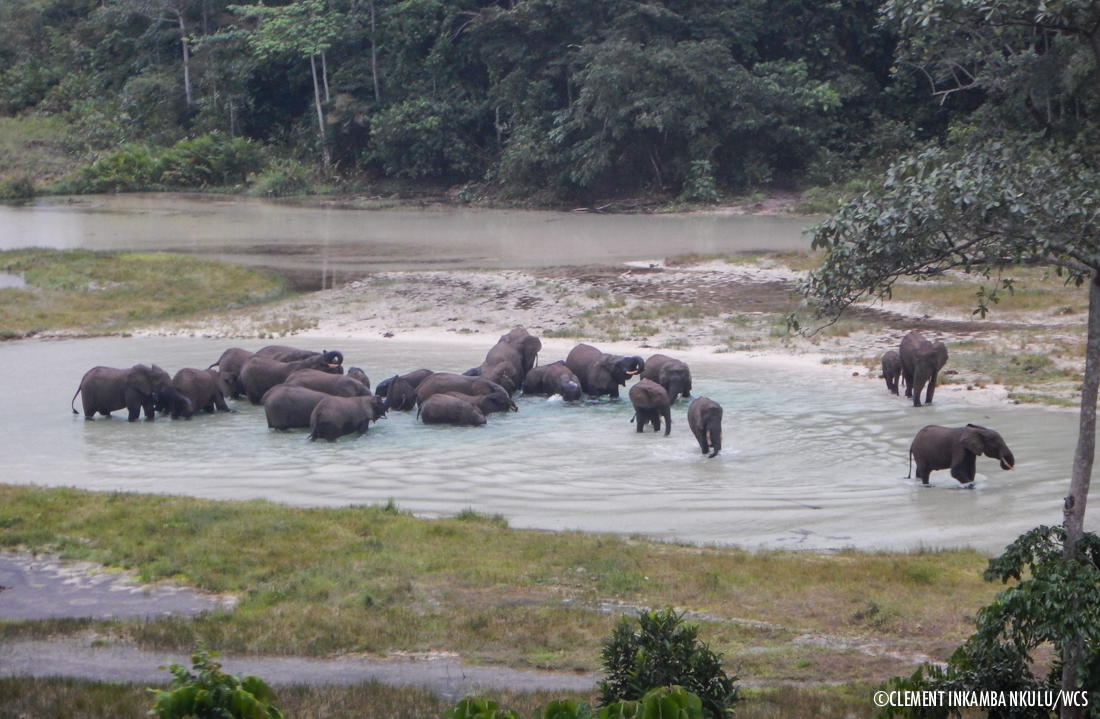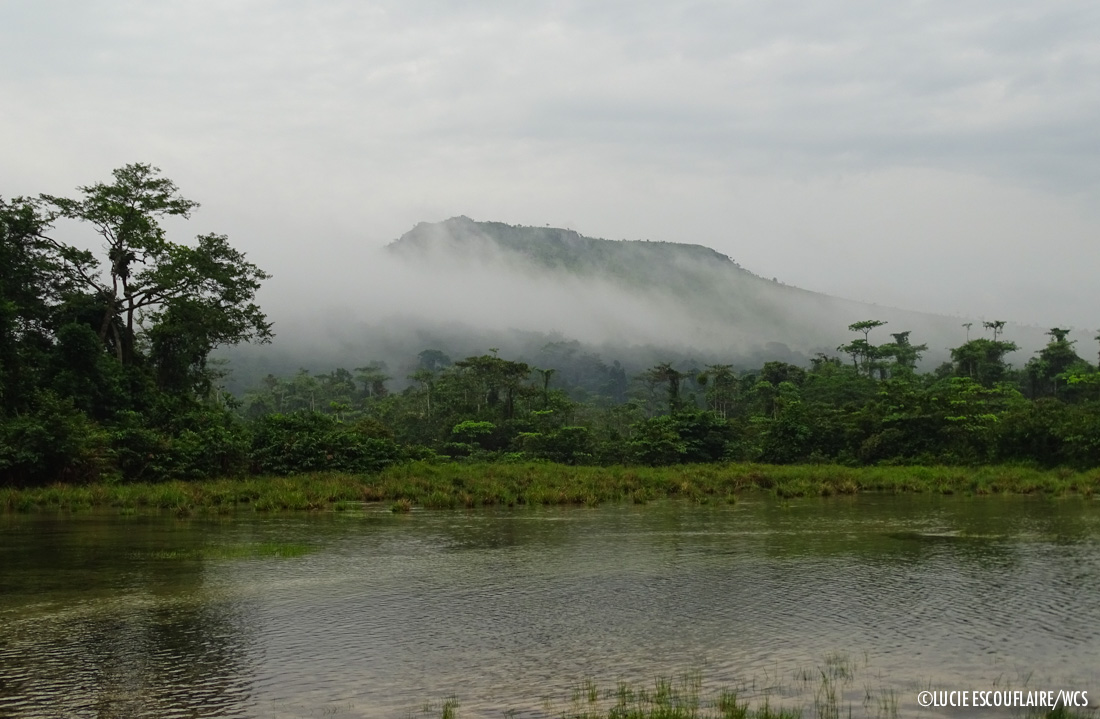
Elephants in the Bateke Plateau
Last week, in the Bateke Plateau, as the orange glow of a Congolese sunset shone through the trees, the Lefini elephant monitoring team observed a rare spectacle. Four different family groups of elephants entered the bai, followed by a lone bull. A total of 33 elephants were observed at the social gathering, the highest number viewed at one time in the clearing in over a year of monitoring.
In the Batéké Plateau, where Pierre Savorgnan de Brazza famously counted over a hundred elephants in a single day’s walk, elephants are now a rare sight. A small population clings on in the Lefini Reserve, but the size of the group is unknown. A WCS research team has been stationed near a forest clearing in the Lefini Reserve, to collect information on these shy forest giants.
”The elephants are now much more relaxed in the bai, visits during the day are becoming more common and this latest, largest yet visit by 33 elephants is a testament to the protection effect of the researchers posted at this site.
Elephants are attracted out of the surrounding forest to clearings like this one by the mineral deposits in its central pools. These mineral deposits are patchily distributed in the landscape and elephants will sometimes travel great distances to obtain minerals essential for their health. As such these forest clearings have historically been hotspots for elephant poaching. This fact is made clear by the elephants’ apprehensive behavior upon arrival at the clearing. The presence of the research team ensures continuous surveillance of the area and helps to deter poachers.
There are three main paths leading out into the bai. All four herds, and the lone bull, that visited on this particular evening used the same path, which was located down wind of the bai allowing the elephants to smell and listen for activity in the clearing before venturing out into the open. Each group of elephants waited in the forest on the edge of the clearing until they were satisfied that it was safe to move into the open.

WCS’s Bateke Plateau project, with support from USAID’s CARPE program and U. S. Fish & Wildlife Service (USFWS), maintains a group of researchers at the site everyday and night, observing the pachyderm visitors. A total of 53 elephants have now been individually identified. Within last week’s group of 33 simultaneous visitors 12 individuals were known, with the remainder of the group being possible new additions to the population study. Clement Inkamba Nkulu, an elephant expert in charge of elephant monitoring in the Bateke landscape, observes that the behavior of the elephants visiting the bai has shifted since the outset of the study in April 2015. “The elephants are now much more relaxed in the bai, visits during the day are becoming more common and this latest, largest yet visit by 33 elephants is a testament to the protection effect of the researchers posted at this site.”

